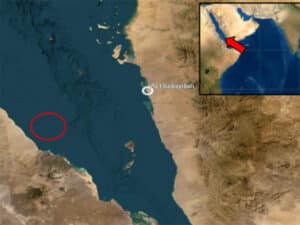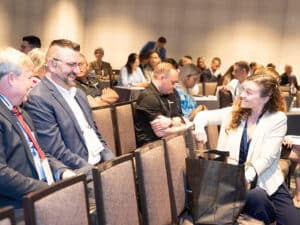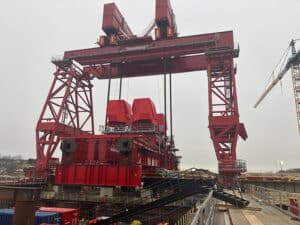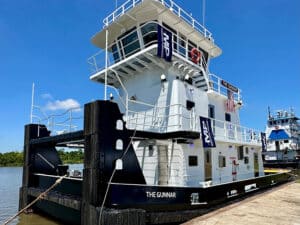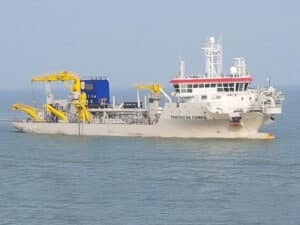
5 teams named Phase Two FLOWIN prize winners
Written by Nick Blenkey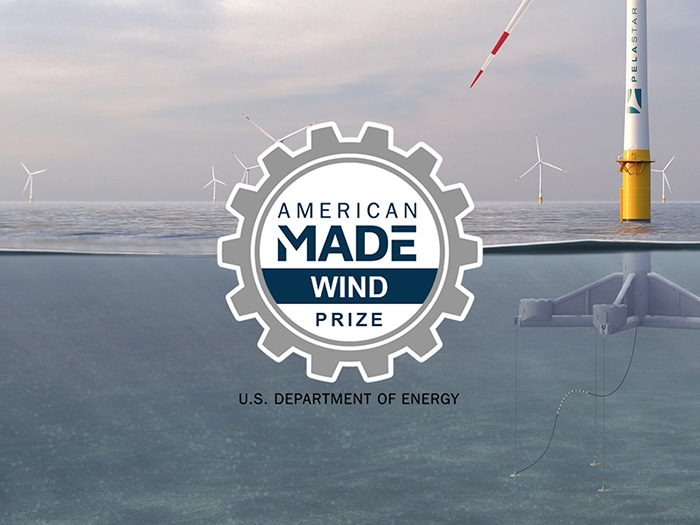
Image: Pela Star
The U.S. Department of Energy (DOE) last week announced the winners of Phase Two of the FLoating Offshore Wind ReadINess (FLOWIN) Prize. Competing teams began with a proven floating offshore wind energy substructure design and, in Phase One, developed pathways to manufacture their systems for deployment in gigawatt-scale offshore wind farms. Each of the five Phase Two winners receive a cash prize of $450,000 and a $100,000 voucher that can be used for technical support at DOE national laboratories.
Part of the Floating Offshore Wind Shot, the FLOWIN competition was designed to encourage the rapid development of floating offshore wind supply chain solutions that can help the U.S, meet its decarbonization goals. Phase One required participating teams to demonstrate their technologies were mature enough to warrant industrialization and that they had viable plans to develop a path to serial production and deployment. Nine Phase One winners were announced in March of 2023 and each team proceeded to Phase Two to adapt their designs for serial production, detail plans for mass production, assembly, and deployment, and prepare a cost estimate and production throughput analysis for deployment of a utility-scale floating wind farm.
Five of the nine teams were announced as Phase Two winners:
FloatHOME (Emeryville, California): FloatHOME is a consortium of Principle Power and Aker Solutions. Its triangular platform, WindFloat, now in its fourth generation, provides deep-water stability through unique design features, including a system that absorbs wave movement. This platform has been fully modularized to enable differing execution plan options, allowing for streamlined manufacturing and adaptable installation.
PelaStar (Seattle, Washington): Glosten’s PelaStar’s floating platform is a light-weight tension leg-platform design that minimizes environmental impacts while maintaining cost savings as well as manufacturing and installation flexibility. PelaStar partnered with Everett Floating Structures, FibreMax, Avient-Dyneema, GMC Limited, Triton Anchor, Havfram, Foss Offshore Wind, Geodis, TRC, and Pacific Northwest National Laboratory to develop an aggressive deployment plan: one 15 MW floating wind turbine assembled and installed every week starting in the early 2030s. In addition to working out the logistics, the team supplied an estimate detailing the cost of such an effort.
Technip Energies (Houston, Texas): Technip Energies’ INO15 design is a semi-submersible, three-column floating platform. This design can be assembled at ports at low cost and is robust enough to withstand harsh operating environments.
Tetra Triple-One (Boston, Massachusetts): Stiesdal Offshore’s Tetra Triple-One floating platform uses a building-block arrangement, which involves fully producing the parts needed in an industrialized manufacturing environment and then transporting them to the assembly site. This makes port-side construction possible for a range of platform configurations, turbine sizes, and site conditions.
WHEEL U.S. (Coral Gables, Florida): Incorporating tanks for buoyancy and balance, Esteyco’s ultra-stable WHEEL floating platform design can temporarily act as a barge platform, allowing it to be assembled with the wind turbine near shore and towed to sea. It is compact in size to reduce both costs and carbon footprint.
Phase Two winners are now eligible to compete in the final phase, in which teams will complete location-specific implementation pathways for manufacturing and that developers could use to deploy floating offshore wind technologies in the United States. At the end of Phase Three, up to three winners will receive a $900,000 cash prize.
The FLOWIN Prize was established in 2022 by DOE’s Wind Energy Technologies Office, with a total cash pool of $5.85 million, plus up to $1.175 million in vouchers for technical support from DOE national laboratories. The prize is part of DOE’s American-Made Program, and is administered by the National Renewable Energy Laboratory with support from the Oceantic Network.

